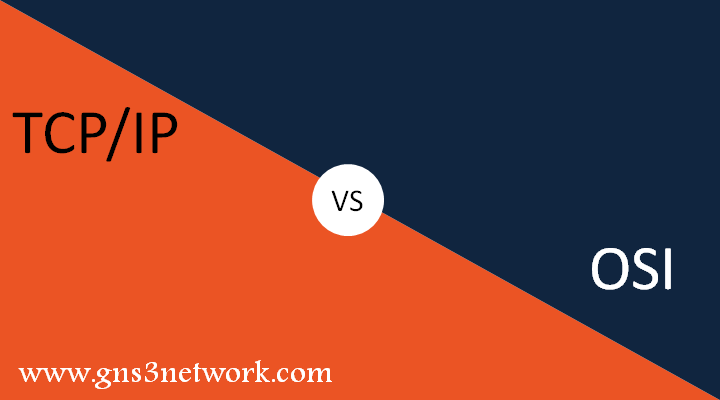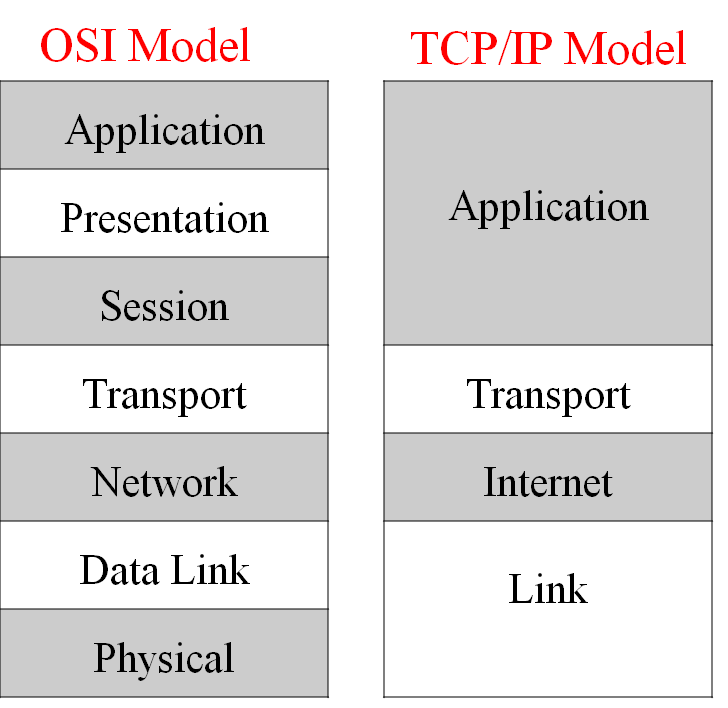In this article, we will discuss the differences between OSI and TCP/IP models. Both models help us to understand the data flow between sender and receiver using different networking protocols. Let’s discuss both of them in more detail.

Below, a diagram will help you to understand both models in a better way.

Understand OSI vs TCP/IP Model in detail
In this table, we have discussed some major differences between TCP/IP and OSI models.
[table id=9 scroll=responsive /]
Although we have discussed both in separate articles, you can find the common details below.
TCP/IP Model
TCP/IP is a protocol stack that was developed by the DoD (Department of Defense). It was developed before the OSI Model. Unlike the OSI model, it has 4 different layers. Network traffic is generated on the application layer by the source and then it follows all of the TCP/IP model layers and then it sends to the receiver. Below are the TCP/IP model layers:
- Application
- Transport
- Internet
- Link
OSI Model
OSI model has 7 different layers. Unlike the TCP/IP Model, this model provides a conceptual view of data flow between various computers. However, this is not a practical model, so it does not have practical usage. Below are the OSI Model layers:
- Application
- Presentation
- Session
- Transport
- Network
- Data Link
- Physical
Related Articles to TCP/IP and OSI Model
- OSI Model – 7 Layers Explained in detail
- TCP/IP Model – Explained 4 Layers of the TCP/IP Model in detail
- UDP | User Datagram protocol – Explained in detail
- TCP | Transmission Control Protocol – Explained in detail
- Switchport Modes | Trunk Port | Access Port
- Cisco line vty 0 – 4 Explanation and Configuration
- IPv4: Internet Protocol Version 4 (Explained with Header)
- Types of Network Firewalls in 2023 – Explained in detail
Reference
Summary
TCP/IP is a protocol suite, which is used during data transmission over the network. TCP/IP was developed by DoD and has 4 different layers. On the other hand, OSI is a reference model, which has 7 different layers. OSI helps us to understand the data flow between different protocols.
Is this article is helpful? Please share it social media platforms and show us some love:)
I get that TCP/IP came before the OSI model but it seems the way I understand it (correct me if i’m wrong) is that the OSI model is the full model with all 7 layers and the TCP/IP model is basically only concerned with layers 3 and 4 of the OSI model. What role does TCP/IP do in the other layers that isn’t done by OSI?
It seems like the TCP/IP is part of the whole and OSI is the whole. The TCP Protocol is used in the Transport layer and the IP Protocol is used in the Network/Internet layer and to my understanding, that’s it for TCP/IP. I get that it has to send and receive data to the application and network interface layers but the TCP/IP don’t do anything on the other layers do they?
That’s my understanding anyway, if someone could correct me if i’m wrong. Thanks